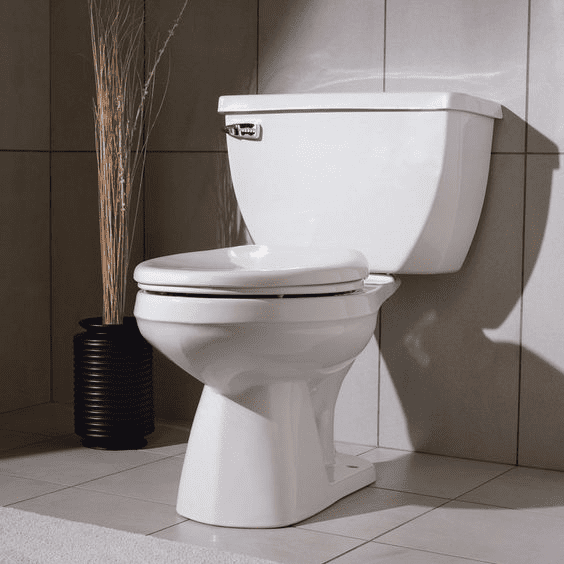A clogged toilet is an inconvenience that may happen to anyone. Most people’s initial response when confronted with a clogged toilet is to run for a plunger. But even if you do not have one, there are a few alternatives to unclog your toilet. In this article, you will learn how to unblock a blocked toilet without a plunger.

Source: Pinterest (Family Handyman)
See also: How to unclog a wash basin blockage?
Step-by-step guide to unclog a toilet without a plunger
These simple methods will help you unclog the toilet fast and without any hassle. When attempting these methods, remember to be cautious and patient. If the problem remains or worsens, professional assistance may be required.
Remember to wear gloves to prevent touching the toilet.
Materials required
- Dish soap
- Baking soda
- Vinegar
- Plastic wrap
- Cloth hanger
Procedure
Buckets of water
If the toilet bowl is not filled with water, pour hot water into the toilet using a bucket. Allow the hot water to rest for a few minutes before flushing. This method should help in breaking up any minor blockage.
Hot water and dish soap
Using hot water and dish soap to unclog a toilet without a plunger is an effective method. Boil water and pour a lot of dish soap into the toilet bowl. The dish soap serves as a lubricant and helps the blockage to move more easily through the pipes. Once the water is boiled, carefully pour it into the toilet bowl. The hot water and dish soap will assist in clearing the blockage and allow it to flow through the pipes. Wait for a while before flushing the toilet.
Baking soda and vinegar
First, put one cup of baking soda into the toilet bowl. Distribute it evenly around the bowl. Next, pour two cups of vinegar into the bowl. Vinegar and baking soda react with each other, thus breaking down the clog. Allow the mixture to sit for around thirty minutes for the solution to make its way through the pipes. Lastly, flush the toilet.
Plastic wrap

Source: Pinterest (Cooktop Cove)
Use plastic wrap to cover your toilet bowl completely and then flush. When the plastic wrap starts to blow upwards, firmly press it to push the air down. The air pressure will force the clog through the pipe.
Using a cloth hanger
Begin by unwinding the hanger to create a long, straight wire. Make a little hook out of one end of the wire. Insert the hooked end carefully into the toilet bowl, moving it around to break up the clog. Do it gently in order to avoid damaging the toilet bowl. Once you feel the blockage has been removed, flush the toilet to check if the water flows freely. Repeat the procedure till the toilet is unclogged.
Commercial drain cleaners
You can use commercial drain cleaners if the above-mentioned tricks are not effective. Use a non-corrosive cleaner that will not harm your drain. Before using the product, read the label. Wear the necessary protective gear while following these methods, and if the toilet does not unclog, then it may be time to seek some professional help.
Prevention of clogs
- Proper disposal of waste: Dispose non-flushable items in garbage cans and do not flush them as they can accumulate, causing blockages.
- Flush properly: Always flush the toilet properly after each use. Keep the flush handle pressed until the water has fully drained from the bowl.
- Regular maintenance and cleaning: Clean your toilet on a regular basis to remove any deposits, bacteria or other debris.
FAQs
What are the common reasons for toilet clogs?
Common causes of clogged toilets are flushing non-flushable objects.
How to prevent toilets from clogging?
You can prevent it by following these methods by only flushing flushable objects; cleaning the toilet regularly and flushing properly after each use.
What to do if I dropped a bar of soap into the toilet?
You should flush the toilet immediately and use a plunger if needed.
How to know if my toilet is clogged?
Common signs of a clogged toilet are water rising to the brim or overflowing when flushed, gurgling sound and bad odour.
| Got any questions or point of view on our article? We would love to hear from you. Write to our Editor-in-Chief Jhumur Ghosh at jhumur.ghosh1@housing.com |






